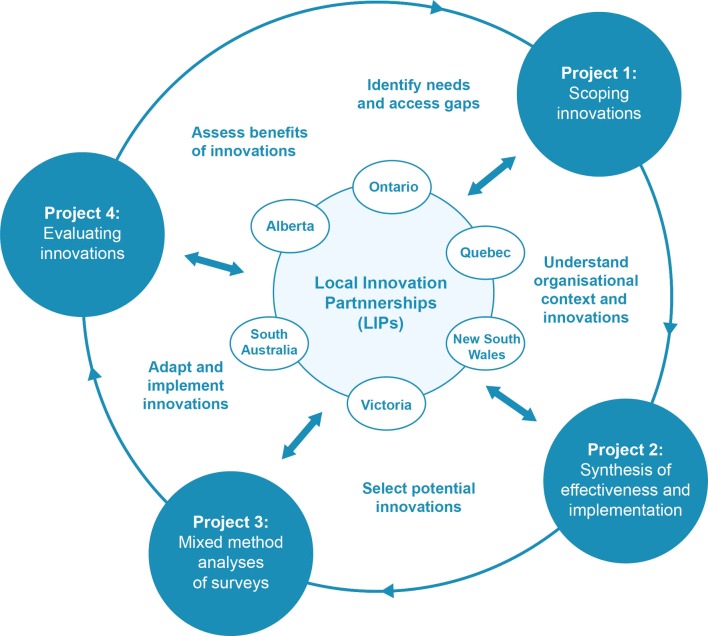Figure 1.
Overall design of the IMPACT programme. The work within the LIPs was informed by the findings of three separate inter-related initiatives (projects 1–3). We used two different approaches to identify effective and/or innovative organisational interventions designed to improve PHC access for vulnerable populations (project 1). The first was a scoping review mapping the existing evidence on PHC organisational access interventions that reported outcomes related to avoidable hospitalisation, emergency department admission or unmet healthcare needs.22 The second used a social media approach to conduct an environmental scan seeking innovative organisational interventions with a potential to improve access to community-based PHC for vulnerable populations.23 We conducted a series of realist reviews of the priority intervention chosen by each LIP (project 2). The reviews were coordinated by members of the international research team in collaboration with members of each LIP. The findings from the reviews informed the overall design of the interventions and helped LIPs identify key contextual factors and mechanisms relevant for each regional intervention. Further information on access in primary care was generated by a series of mixed-methods analyses of several Commonwealth Fund Surveys (2014 International Health Policy Survey of Older Adults and the 2013 survey of all adults)24–26 (project 3). This paper outlines the process that will be used for the evaluation of the innovations (project 4).

